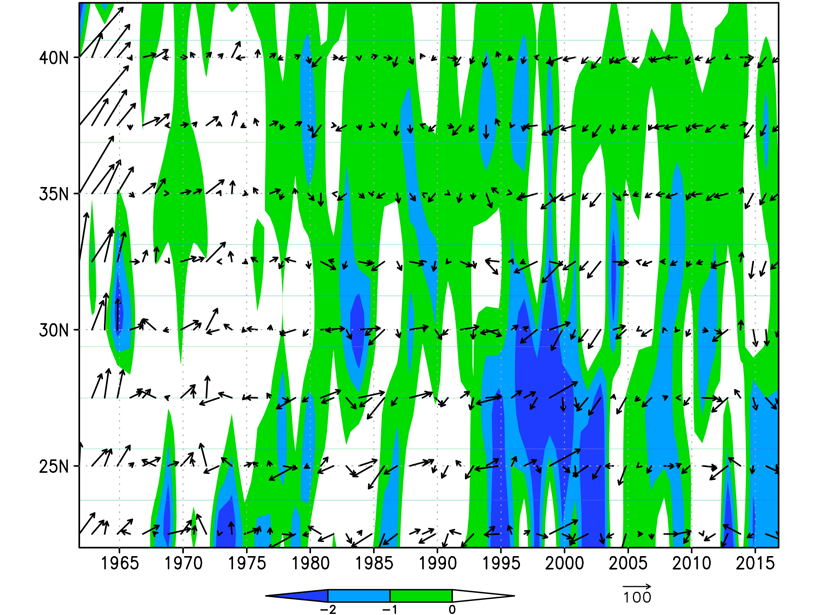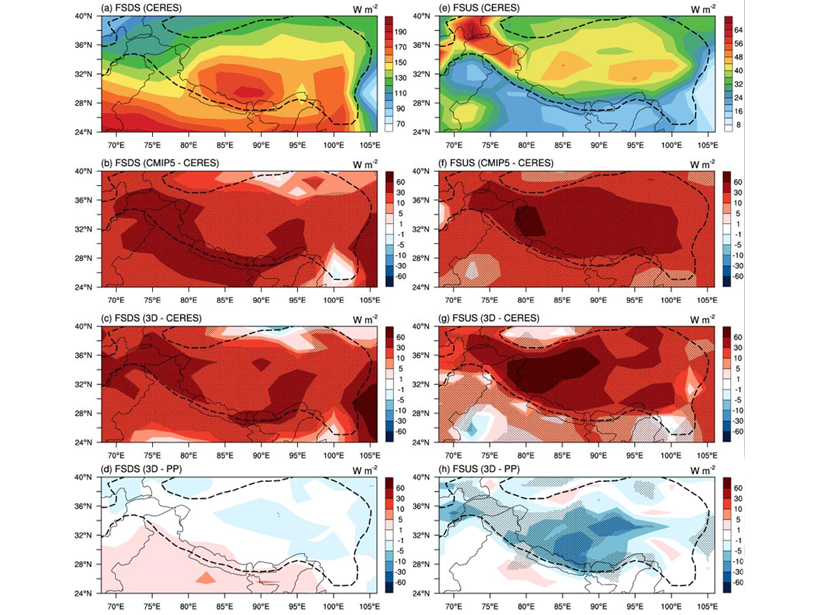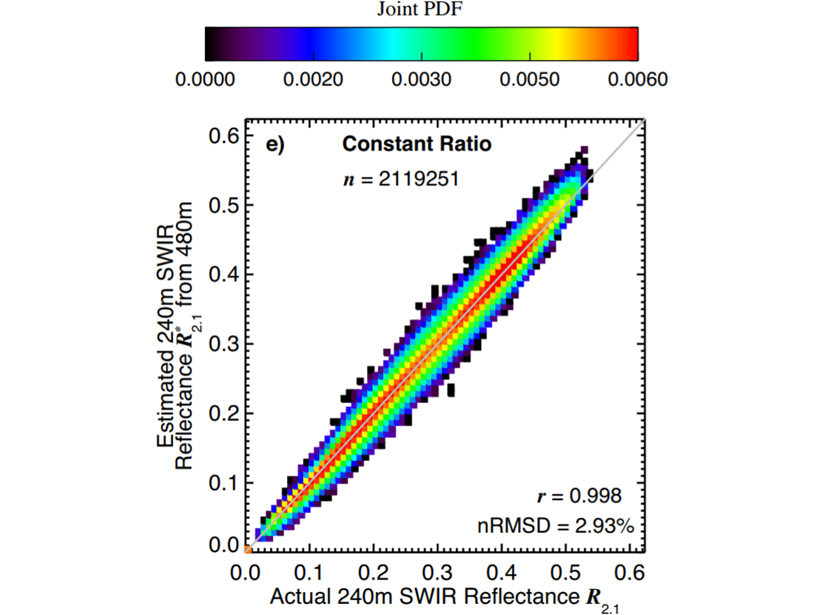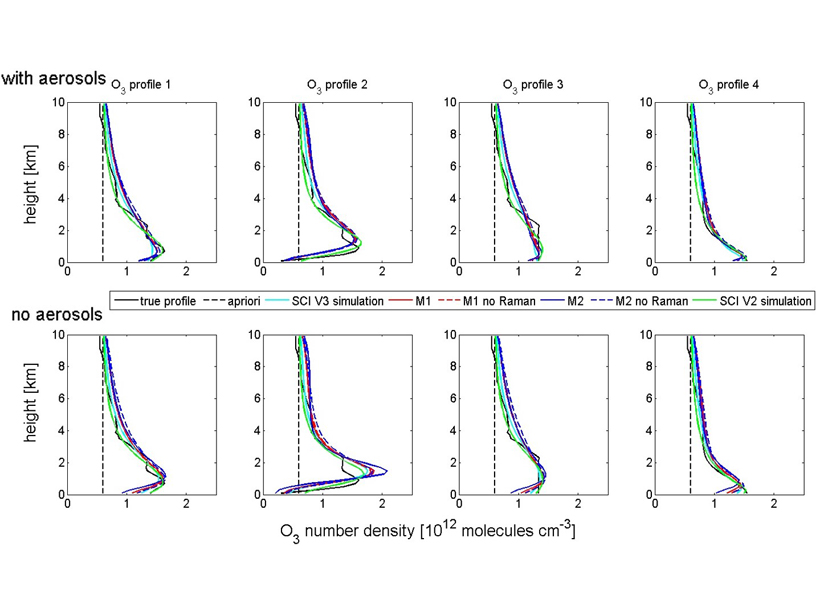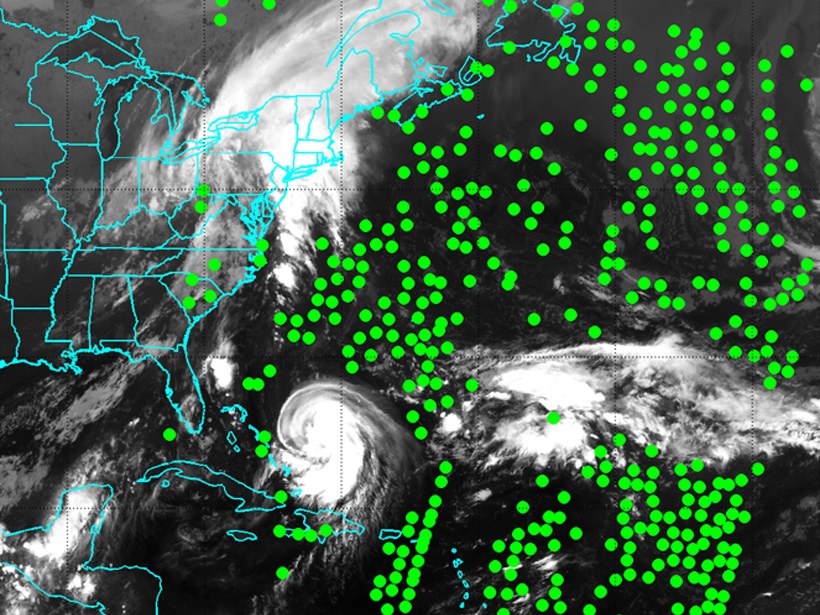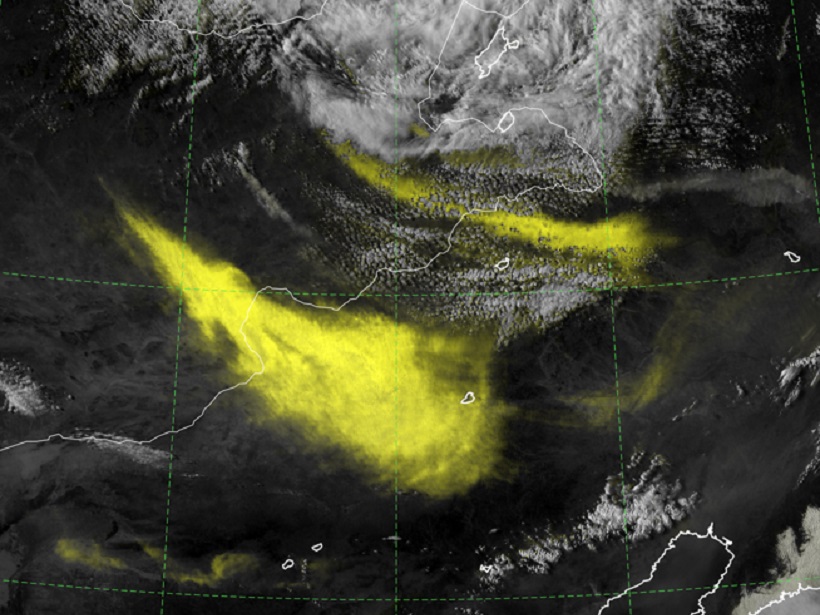According to Chinese myth, rain is water poured out of a dragon; in reality is the Meiyu that dictates rainfall in eastern Asia, producing rain belts jumping from south in spring to north in summer.
Z. Li
Editor, JGR: Atmospheres
A Global View of Shapes and Sizes of Ice Crystals in Cloud Tops
Ice particles have systematic covariations and temperature dependences that are surprisingly consistent with a simple ice growth theory as revealed by satellites.
Intensified Investigations of East Asian Aerosols and Climate
Three special collections in JGR: Atmospheres present a fast-growing body of literature on atmospheric aerosols and their impact on the regional climate in East Asia.
3D Radiation-Topography Interaction Warms Up Tibetan Plateau
3-D radiation-topography interaction, which can increase the sunlight absorption by the surface, is missing in all climate models, causing strong cold biases over the Tibetan Plateau.
Improving Retrievals for Vertically Inhomogeneous Warm Clouds
Cloud droplet size changes with height, but passive sensors are virtually blind to see it; however, combining passive with active sensors helps profile it in vertically inhomogeneous warm clouds.
Improving Retrievals for Partially Cloudy Pixels
Cloud retrievals for partly cloudy pixels might be able to be improved by using high-resolution samples in a visible to near-infrared band, which many satellite sensors offer.
Retrieving Tropospheric Ozone from Ground-based Spectroscopy
A new technique can retrieve the profile of ozone from surface to tropopause by MAX-DOS ground-based measurements.
Listening to the Clouds
The assimilation of cloud-cleared infrared data improves numerical weather forecasting, especially for hurricanes, by providing thermodynamic information in cloudy atmosphere.
Addition by Subtraction: Raising the Bar for Satellite Imagery
When it comes to forecaster analysis of complex satellite imagery, less can be more, and a new technique aims to simplify imagery interpretation by suppressing the background noise.

